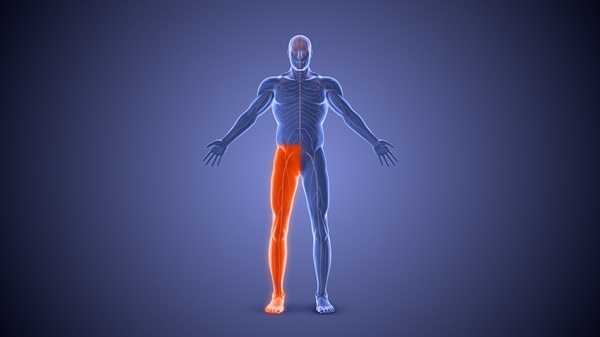
monoplegia
Expert Physiotherapy at Home
Personalised Recovery Programmes
Trusted Physiotherapists. Real Results.
Patient Testimonials
Our Medical Team
Meet some of our experienced and dedicated healthcare professionals
Dr. Lokesh G
15 Years Experience
SPECIALIZATIONS
Experienced in Neurological rehabilitation, Orthopaedic physiotherapy, and Paediatric care
Delivers structured, high-impact treatment plans across neuro, ortho, and paediatrics—ensuring safety, comfort, and measurable recovery at every stage.
Dr. Mohammed Sarwar
15 Years Experience
SPECIALIZATIONS
Experienced in Neurological rehabilitation, Adult physiotherapy, and Paediatric care
Combines deep clinical expertise with a compassionate approach, supporting both adults and children through neuro and physical rehabilitation that promotes long-term independence and recovery.
Dr. Nelapati Divya
12 Years Experience
SPECIALIZATIONS
Skilled in Orthopaedic rehabilitation, Manual therapy techniques, and Paediatric physiotherapy
Brings a personalised, hands-on approach to healing—combining structural expertise with paediatric sensitivity to restore movement, relieve pain, and improve everyday function.
Dr. Naveen V
3 Years Experience
SPECIALIZATIONS
Trained in Pain management, Cardiac and Orthopaedic rehabilitation, Neurological care, and Neural tissue mobilisation
Brings clinical precision and empathy together—designing science-backed recovery protocols for pain relief, nerve mobilisation, and cardio-neuro-ortho rehabilitation across all age groups
Dr. Miloni Savla
2 Years Experience
SPECIALIZATIONS
Holds an MPT in Orthopaedics with a focus on Musculoskeletal rehabilitation and strength recovery
Delivers focused, movement-oriented therapy grounded in orthopaedic science—helping patients rebuild strength, restore function, and return to daily life with confidence

introduction to monoplegia
Monoplegia is a neurological condition characterized by the paralysis of a single limb, such as an arm or a leg. This condition arises from damage to the nervous system, particularly affecting the motor pathways responsible for movement. Monoplegia can significantly impact an individual’s ability to perform daily tasks, making timely diagnosis and appropriate management critical. The severity and underlying causes of monoplegia can vary, and understanding these factors is essential to ensure effective treatment.
signs and symptoms of monoplegia
The primary symptom of monoplegia is the complete or partial loss of movement in one limb. Individuals may also experience muscle weakness, stiffness, or lack of coordination in the affected limb. In some cases, there may be associated sensory disturbances, such as numbness or tingling. The condition can develop suddenly, as in cases of stroke or trauma, or progress gradually in degenerative neurological disorders. Depending on the cause, additional symptoms such as pain, spasms, or changes in muscle tone may also be present.
causes of monoplegia
Monoplegia can result from various causes, including damage to the brain, spinal cord, or peripheral nerves. Strokes, traumatic injuries, or tumors that affect specific regions of the brain or spinal cord are common causes. Other factors include infections such as meningitis, autoimmune disorders like multiple sclerosis, or congenital conditions such as cerebral palsy. In rare cases, monoplegia can be caused by nerve compression or localized injuries, such as brachial plexus damage. Identifying the underlying cause is crucial for determining the appropriate treatment approach.
risks of monoplegia
Certain factors increase the likelihood of developing monoplegia. These include a history of neurological conditions, traumatic injuries, or vascular diseases that predispose individuals to strokes. Age is also a significant risk factor, as older adults are more prone to conditions like stroke and degenerative diseases. Occupational hazards, such as jobs involving repetitive strain or exposure to toxins, can contribute to nerve damage and increase the risk of monoplegia. Early intervention to address these risks can help prevent the onset or progression of the condition.
prevention of monoplegia
Preventing monoplegia involves addressing its underlying causes and risk factors. Adopting a healthy lifestyle, including regular exercise, a balanced diet, and stress management, can reduce the risk of strokes and other vascular conditions. Safety measures, such as wearing protective gear during high-risk activities, can help prevent traumatic injuries that may lead to monoplegia. For individuals with chronic conditions like diabetes, managing blood sugar levels and adhering to medical advice can reduce the risk of nerve damage. Regular health check-ups and prompt treatment of infections or other medical conditions are also essential preventive measures.
treatment methods and diagnosis of monoplegia
Diagnosing monoplegia involves a comprehensive medical evaluation, including a detailed patient history, physical examination, and imaging studies like MRI or CT scans to identify the cause of the paralysis. Additional tests, such as nerve conduction studies or electromyography, may be conducted to assess nerve and muscle function. Treatment focuses on addressing the underlying cause and improving the patient’s functional abilities. Depending on the cause, interventions may include medications, physical therapy, occupational therapy, or surgery in severe cases. Assistive devices like braces or splints may also be used to enhance mobility and independence.
how physiotherapy helps monoplegia
Physiotherapy plays a vital role in the management of monoplegia by improving mobility, strength, and coordination in the affected limb. A tailored physiotherapy program includes exercises to strengthen muscles, reduce stiffness, and enhance range of motion. Techniques such as electrical stimulation and manual therapy may also be employed to stimulate nerve and muscle activity. Physiotherapists provide education on safe movement patterns and the use of assistive devices to help patients regain independence. Regular therapy sessions are critical for preventing complications like muscle atrophy or joint contractures and ensuring optimal recovery outcomes.
how portea helps monoplegia
At Portea, we understand the challenges faced by individuals living with monoplegia. Our home-based physiotherapy services are customized to address each patient’s unique needs, focusing on restoring strength, mobility, and functional independence in a safe and supportive environment.
We also specialize in providing expert physiotherapy services for post-surgical rehab, arthritis, neuro-rehabilitation, sports injury, orthopedic physiotherapy, elderly care, and respiratory therapy – all conveniently delivered at your home. Our experienced team is dedicated to ensuring that you receive the personalized care you need for a smooth and successful recovery.
portea’s other physiotherapy services based on medical conditions
faq’s on monoplegia
1. What is monoplegia?
Monoplegia refers to the paralysis or weakness of a single limb, usually due to damage in the brain or spinal cord that affects the motor functions.
2. Can monoplegia affect both limbs?
No, monoplegia specifically affects one limb, either the arm or the leg, as opposed to hemiplegia, which affects both limbs on one side of the body.
3. How is monoplegia diagnosed?
Monoplegia is typically diagnosed through a combination of physical exams, medical history, and advanced imaging tests like MRI or CT scans to identify the underlying cause.
4. What treatments are available for monoplegia?
Treatment for monoplegia depends on the underlying cause. It may include physical therapy, medications to manage symptoms, surgery to address any physical blockages or nerve damage, or assistive devices to aid mobility.
5. How can physiotherapy help with monoplegia?
Physiotherapy helps improve movement, strength, and coordination in the affected limb. It includes exercises, muscle strengthening, mobility training, and the use of assistive devices for better functional independence.
6. Can monoplegia be prevented?
While it is not always preventable, managing risk factors such as preventing stroke through a healthy lifestyle, regular check-ups, and avoiding injuries can help reduce the chances of developing monoplegia.
7. What lifestyle changes can help manage monoplegia?
Adopting a healthy diet, staying active, managing chronic conditions like hypertension or diabetes, and avoiding smoking or excessive alcohol consumption can all help prevent the worsening of conditions related to monoplegia.
8. Can someone fully recover from monoplegia?
Recovery depends on the cause and severity of the condition. With early intervention, physical therapy, and the right treatment, individuals can regain some level of movement, but full recovery is not always guaranteed.
9. Is surgery necessary for monoplegia?
Surgery may be necessary if the cause of the monoplegia is due to a physical blockage, such as nerve compression or a tumor. It is not always required, as other treatments like medication and therapy may be sufficient.
10. Can monoplegia cause long-term disability?
If left untreated or if the underlying cause is severe, monoplegia can lead to long-term disability, impacting a person’s independence and quality of life. Early treatment is key in improving outcomes.
Doctor Consultation
Nursing
Physiotherapy
Trained Attendant
Elder Care
Mother & Baby Care
Lab Tests
Medical Equipment
Speciality Pharma
Critical Care











